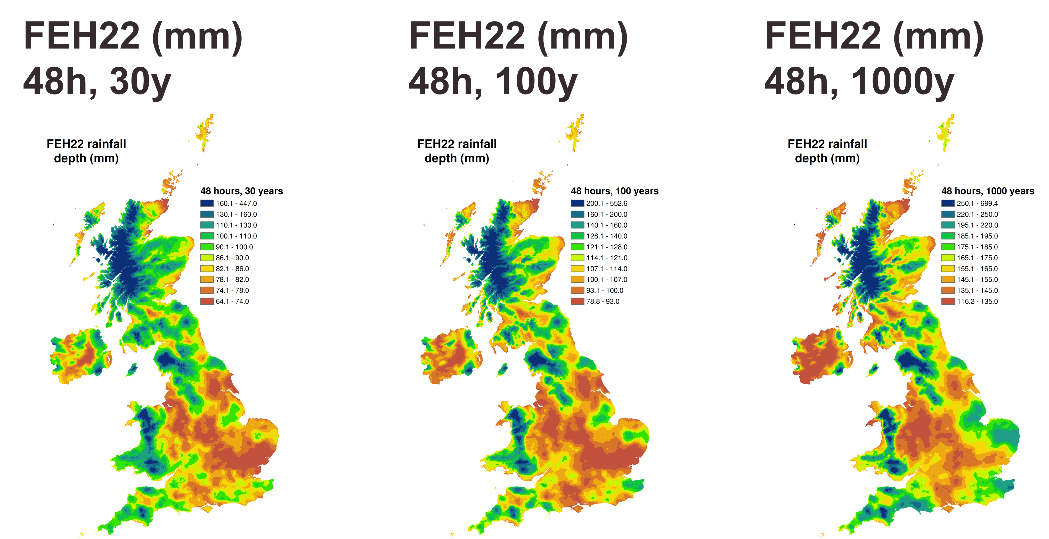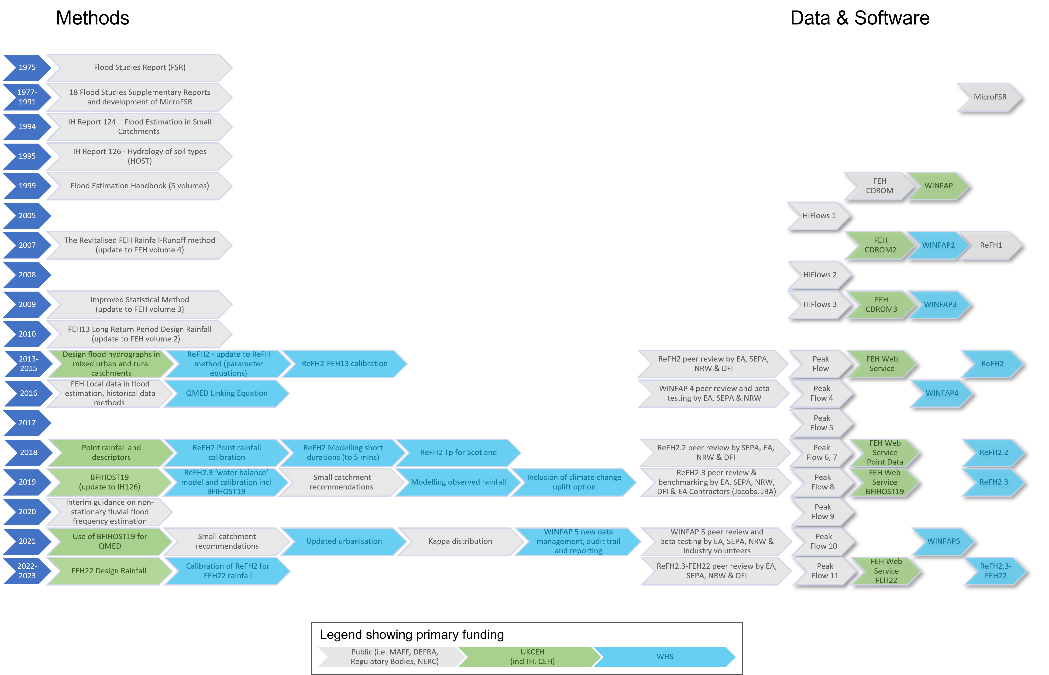The Flood Estimation Handbook (FEH) and the earlier Flood Studies Report (FSR) are a set of methods and associated data to enable recognised standard national methods for rainfall and flood estimation, and rainfall-runoff modelling. They are based on calibration to large hydro-meteorological datasets from gauged locations across the UK.
FEH was first delivered as a 5-volume printed series (1999) and associated CD-ROM but has evolved into a much wider collection of updated and expanded methods, data and guidance. This includes the Revitalised Flood Hydrograph method (ReFH). All methods are open-access and links to all FEH and SFSR volumes and all UKCEH authored publications are provided in the project menu.
The FEH statistical method and ReFH are both available as software solutions (WINFAP and ReFH2) to enable industry applications of the methods. These are not managed by UKCEH and are available as commercial subscriptions from Wallingford Hydro-Solutions.
FEH and ReFH data and methods are the UK regulatory recommended methods for estimating river flood frequency and design rainfall in England (Environment Agency - EA), Scotland (Scottish Environment Protection Agency - SEPA), Wales (Cyfoeth Naturiol Cymru - NRW). The methods feed into national flood mapping such as the National Flood Risk Assessment (NAFRA).





